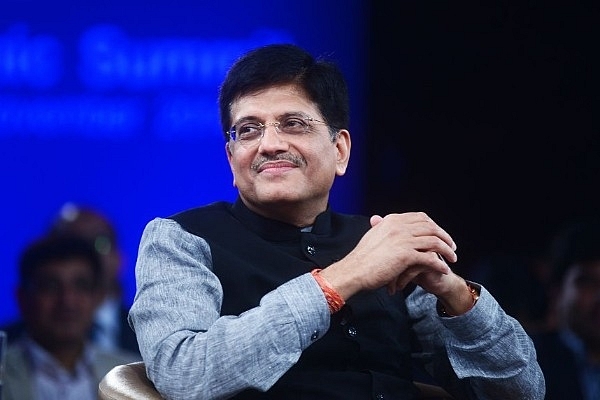News Brief
Rail Budget To Continue With Growth Trajectory: Capacity Building, Infrastructure, Reducing Accident Rate On Focus
- During 2019-20, the Railways carried 12,084 lakh tonnes of goods and ferried 80,857 lakh passengers, making it the world’s largest passenger carrier and the fourth-largest freight carrier.

Railway Minister Piyush Goyal (Ramesh Pathania/Mint via Getty Images)
Continuing with the growth trajectory, the emphasis of the Railway Budget would be on the capacity enhancement with significant investment on infrastructure and reducing accident rate considerably to ensure the safety of passengers.
Rail Budget, now part of the Union Budget, is likely to aim for speeding up goods trains to attract more loadings as more sections of the Dedicated Freight Corridors are being commissioned for service.
On the passenger front, the Budget 2021-22 would contain upgraded amenities for rail users with the introduction of modern coaches and concrete steps to reduce travel time ensuring speed and comfort.
Railways' special cleanliness campaign under the Swachh Bharat Abhiyan has shown results as it has installed bio-toilets in all its passenger coaches. However, since the pandemic is unarguably the most consequential global event of 2020, its cascading effect is likely to be seen in the Budget.
While presenting the Budget, Finance Minister Nirmala Sitharaman is likely to take note of the COVID-19 lockdown and social distancing measures which had a significant impact on the travelling sector.
The operating ratio of the COVID-hit Indian Railways would be a cause of concern as there is a negative growth in passenger sector with many trains not being operational.
Higher operating ratio is an indicator of the stressed finances of the national transporter. Operating ratio was 96.2 percent in the 2020-21 Budget against 97.4 in 2019-20.
With Capex of Indian Railways for 2020-21 was at an all time high of Rs 1,61,042 crore. This year it was slated to go up further at over Rs 1.70 lakh crore. Gross Budgetary Support (GBS) is also expected to see a jump from Rs 70,000 crore in 2020-21 to touch nearly Rs 80,000 crore.
According to the Economic Survey, "The government has allowed private players to operate in the Railways through the public, private partnership (PPP) mode under the New India, New Railway initiative."
Despite the slowdown due to the coronavirus pandemic, Indian Railways made an all-out effort to perk up the goods service transporting essential items, medicine, fertiliser, cement, oil and agri products across the country.
The loadings was 118.13 million tonnes in December 2020, which is 8.54 per cent higher compared to last year's loading (108.84 million tonnes) for the same period.
The pre-Budget survey said that during 2019-20, the Railways carried 12,084 lakh tonnes of goods and ferried 80,857 lakh passengers, making it the world's largest passenger carrier and the fourth-largest freight carrier.
In order to keep up with new age aspirations, Indian Railways has carried out feasibility study for more high speed and semi-high speed corridors in the country as futuristic projects.
Elimination of all unmanned level crossings, replacement of aging tracks and upgradation of signalling system has significant impact on train operation resulting in drastic reduction of accidents.
Make In India and Atmanirbhar Bharat initiatives of Indian Railways to keep the growth engine on the track are slated to feature in the Budget proposals. Laying of new tracks, route electrification and proliferation of clean energy would continue to get priority like previous years.
Introducing ElectionsHQ + 50 Ground Reports Project
The 2024 elections might seem easy to guess, but there are some important questions that shouldn't be missed.
Do freebies still sway voters? Do people prioritise infrastructure when voting? How will Punjab vote?
The answers to these questions provide great insights into where we, as a country, are headed in the years to come.
Swarajya is starting a project with an aim to do 50 solid ground stories and a smart commentary service on WhatsApp, a one-of-a-kind. We'd love your support during this election season.
Click below to contribute.
Latest